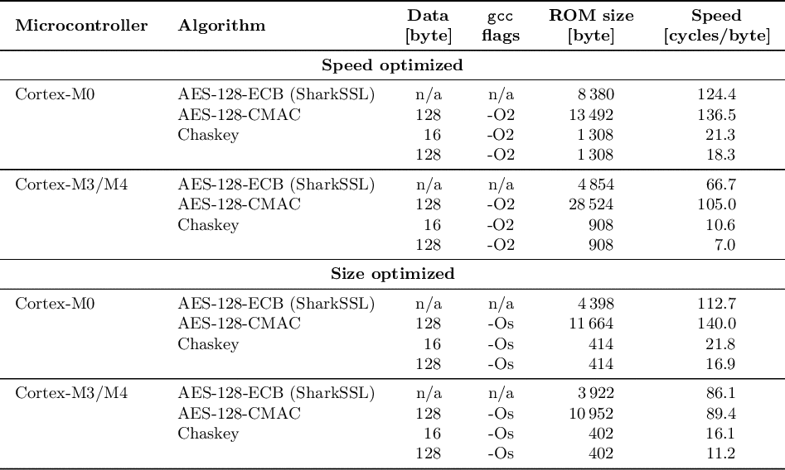The Chaskey Cipher: The Ligher — The B

The Chaskey Cipher: The Lighter — The Better
Our current cryptography methods, such as with AES, are not fit for limited performance devices, such as RFID tags and 8-bit microprocessors. Thus we need to investigate the usage of light-weight methods, and which are more efficient on energy consumption, processor activity and memory.
Chaskey Cipher is light-weight cryptography method for signing messages (Message Authenticaiton Code — MAC) using a 128-bit key [paper]:

As it is a MAC, we have a shared key, and then sign a message with it. In this way we can check the message and its sender (as only they will have the right key to sign it). The research papers focuses on benchmarking it against AES (CMAC) and found that it needed much less ROM code, and also required much fewer cycles per cyber (for a Cortox-M0 processor this went from 136 cycles per byte for AES-128-CMAC to just 21.3 cycles per byte for Chaskey with a 16 byte version):

The hardware implementation Chaskey only requires 3,334.33 gate equivalent (GE) with an operating clock frequency of 1 MHz (whereas Keccak requires 4,658 GE). In the following we create the Mac signature:
Back] Chaskey Cipher is light-weight cryptography method for signing messages (MAC) using a 128-bit key [ paper]. The…asecuritysite.com
And here is the code:
Enjoy a lighter world:
ABSTRACT ABSTRACT While our conventional cryptography methods, such for AES (encryption), SHA-256 (hashing) and…www.tandfonline.com
And here’s a few other methods: